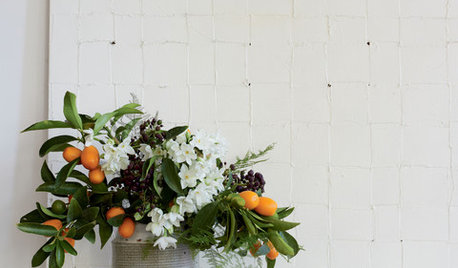Fruit tree rootstocks?
Highlands_Croft
11 years ago
Featured Answer
Comments (9)
fruitnut Z7 4500ft SW TX
11 years agoRelated Professionals
Beachwood Landscape Architects & Landscape Designers · East Patchogue Landscape Architects & Landscape Designers · Barrington Landscape Contractors · Camp Verde Landscape Contractors · Conroe Landscape Contractors · Ellicott City Landscape Contractors · Fuquay-Varina Landscape Contractors · Hilton Head Island Landscape Contractors · Holland Landscape Contractors · La Vista Landscape Contractors · Roseville Landscape Contractors · Roswell Landscape Contractors · San Bruno Landscape Contractors · South Lyon Landscape Contractors · The Villages Landscape Contractorsalan haigh
11 years agoHighlands_Croft
11 years agoolpea
11 years agoalan haigh
11 years agoolpea
11 years agoalan haigh
11 years agoalan haigh
11 years ago
Related Stories

FARM YOUR YARDIf You Have Room for Only One Fruit Tree ...
Juice up a small garden with one of these easier-care or worth-the-effort fruit trees for a mild climate
Full Story
EDIBLE GARDENSHow to Grow 10 Favorite Fruit Trees at Home
Plant a mini orchard in fall, winter or early spring to enjoy fresh-off-the-tree fruit the following year
Full Story
GARDENING AND LANDSCAPINGCrazy for Fruit Trees
Whether a single citrus or a mini apple orchard, even the smallest landscape space can bear deliriously delicious fruit
Full Story
EDIBLE GARDENSGrow Plum Hybrids for Your Favorite Fruit Flavors
Plums are cozying up with apricots, peaches and even cherries — here’s how to grow these hybrids for the best aspects of each
Full Story
EDIBLE GARDENSHow to Add an Apple Tree to Your Edible Garden
Readily available, beautiful and fragrant, apple trees offer four-season interest along with crisp, juicy fruit
Full Story
EDIBLE GARDENSHow to Grow Your Own European and Asian Pears
Try these trees for their good looks, delicious fruit and wide range of sizes — plus you can espalier them
Full Story
FALL GARDENING5 Fall Fruits You Can Grow in Containers
Brighten your porch or patio with a potted pomegranate, kumquat, blueberry bush or another great fall fruit
Full Story
GARDENING GUIDESGreat Design Plant: Grow Blueberries for Their Fruit and More
Eastern gardeners should consider growing blueberry plants for their delicious fruits, bee-friendly spring blooms and brilliant fall foliage
Full Story
MOST POPULARHow to Get Rid of Those Pesky Summer Fruit Flies
Learn what fruit flies are, how to prevent them and how to get rid of them in your home
Full Story
DECORATING GUIDESPut Your Best Fruit Forward in Splendid Fall Arrangements
Luscious, colorful and unbeatably fresh, fruit-centered arrangements bring welcome flavor to fall home decor
Full StorySponsored
Your Custom Bath Designers & Remodelers in Columbus I 10X Best Houzz
More Discussions









dmtaylor